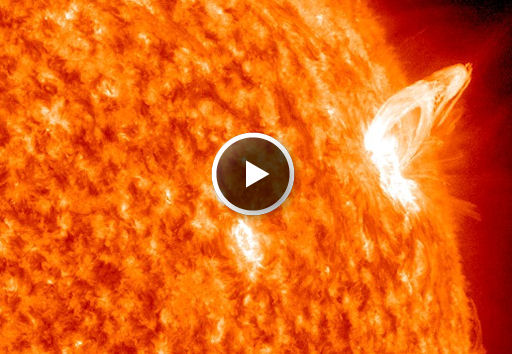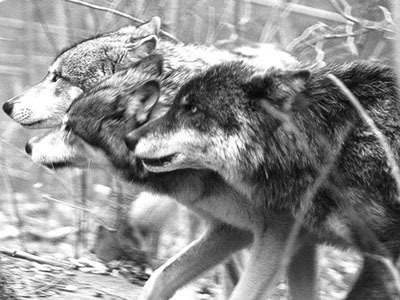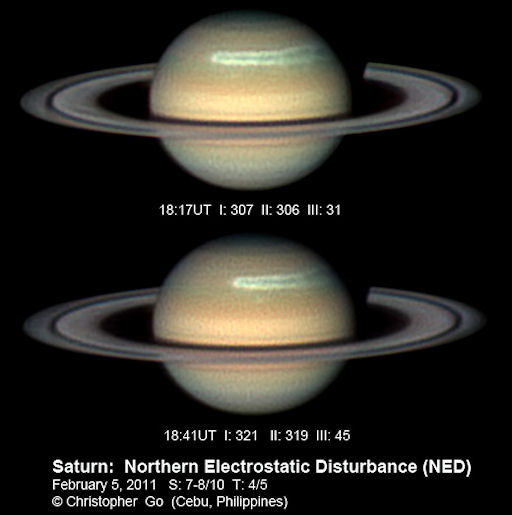 |
| Also see excellent NASA map of Campi Fiegrei area: |
8 Feb 11 - Yesterday, Naples' leading newspaper IL Mattino, reported an earthquake swarm in the Campi Flegrei near Naples. The main event was a 1.2-magnitude (or maybe 4.8) with its epicenter in Pozzuoli.
| I used Google translate to read the above article. It says "4.8-magnitude 1.2." I don't know which number is correct. |
Residents of Pozzuoli and the surrounding area, one of the highest volcanic risk areas in the world, are alarmed and fearful because of antiquated civil defense plans.
They're alarmed, because the Campi Flegrei caldera is an active volcano.
Not only is it active, it is a supervolcano, and its last major eruption took place about 12,000 years ago. That eruption was centered on the town of Pozzuoli.
Vesuvius nothing more than a pimple
"Although there’s no picture-postcard volcanic cone, hidden beneath the seemingly placid landscape lies a volcano of immense power," says journalist Phil Robinson. "While a new eruption here would be more likely to result in the creation of another Vesuvius-like cone, the worst-case scenario could see it obliterating much of life in Europe."
"Although there’s no picture-postcard volcanic cone, hidden beneath the seemingly placid landscape lies a volcano of immense power," says journalist Phil Robinson. "While a new eruption here would be more likely to result in the creation of another Vesuvius-like cone, the worst-case scenario could see it obliterating much of life in Europe."
"Vesuvius, which destroyed the Roman city of Pompeii, incinerating and suffocating thousands, is nothing more than a pimple on the back of the sleeping dragon of Campi Flegrei, an active four-mile-wide sunken volcano."
Now here's my concern.
Now here's my concern.
I've been warning you earthquake and volcanic activity increases tremendously at the beginnings of ice ages, and that those increases recur in a dependable, predictable cycle about every 11,500 years.
Knowing that Campi Flegrei last major eruption occurred about 12,000 years ago ... well, you get the picture.
 |
| Mount Montasio Photo credit: Johann Jaritz See full resolution Mount Montasio |
8 Feb 10
Hello Robert,
Today on the radio came up a news: In the northeastern part of Italian Alps, precisely on Mount Canin and Mount Montasio, the glaciers have been growing for three years. Before that period it was a decrease in the volume of ice. Although the glaciers of these mountains have not lowered their front, the volume of ice increased.
Icelandic volcano 'set to erupt'link
Scientists in Iceland are warning that another volcano looks set to erupt and threatening to spew-out a pall of dust that would dwarf last year's event.
Geologists detected the high risk of a new eruption after evaluating an increased swarm of earthquakes around the island's second largest volcano.
Pall Einarsson, a professor of geophysics at the University of Iceland, says the area around Bárdarbunga is showing signs of increased activity, which provides "good reason to worry".
He told the country's national TV station that a low number of seismometer measuring devices in the area is making it more difficult to determine the scale and likely outcome of the current shifts.
But he said there was "every reason to worry" as the sustained earthquake tremors to the north east of the remote volcano range are the strongest recorded in recent times and there was "no doubt" the lava was rising.
The geologist complained that the lack of coverage from measuring devices means he cannot accurately detect the depth and exact location of the increased number of localised earth movements.
Army Chief Ashkenazi: Prepare for all-out warlink
In his final days on the job, Chief of Staff Ashkenazi warns about growing radicalization in region; given recent changes across Middle East, Israel must prepare for a battle in several theaters, he saysBoaz Fyler
| Given recent changes in the Middle East, Israel must prepare for a battle in several theaters, outgoing IDF Chief of Staff Gabi Ashkenazi said Monday at the Herzliya Conference. "The connection between the different players requires us to contend with more than one theater," he said. The radical camp in the Middle East is gaining strength, Ashkenazi warned, adding that "the moderate camp among the traditional Arab leadership is weakening." He also made note of what he characterized as the "fascinating phenomenon" whereby power is shifting to the people of the region thanks to online social networks.  Army chief warns about growing threats (Photo: Uri Porat) The army chief said that in the wake of the growing threat of radical Islam among Israel's neighbors, the defense budget would have to be boosted in the coming years. The main change faced by the army is the widening spectrum of threats, he said. "Because of this spectrum, we must prepare for a conventional war…it would be a mistake to prepare for non-conventional war or limited conflicts and then expect that overnight the forces will operate in an all-out-war," he said. Praising Israel's youngstersHowever, Ashkenazi said that both Hamas and Hezbollah pose only a limited threat to Israel at this time."I do not underestimate Hamas or Hezbollah, but they cannot take over the Negev or Galilee," he said. Hezbollah and Hamas understood that encountering the IDF on the classic battlefields is lethal, and are therefore fighting out of urban areas, the army chief added. "We are going to the schools, and I want to tell you that these young people, with the piercing and tattoos or whatever you call it, are enlisting," he said. "These are incredibly high-quality youths." | |||
Solar activity increases- magnetosphere displays more chaotic patterns

 February 9, 2011 – Sunspots have increased on the solar surface and according to Space Weather, solar activity is heating up. Formerly quiet sunspot 1153 is suddenly crackling with C- and M-class solar flares. NASA Solar Dynamics Observatory recorded this eruption during the waning hours of Feb. 8th. Because sunspot 1153 is rounding the sun’s western horizon, these eruptions are not Earth-directed. They are, however, Venus-directed. The second planet from the sun could receive glancing blows from solar plasma clouds in the days ahead. –Space Weather
February 9, 2011 – Sunspots have increased on the solar surface and according to Space Weather, solar activity is heating up. Formerly quiet sunspot 1153 is suddenly crackling with C- and M-class solar flares. NASA Solar Dynamics Observatory recorded this eruption during the waning hours of Feb. 8th. Because sunspot 1153 is rounding the sun’s western horizon, these eruptions are not Earth-directed. They are, however, Venus-directed. The second planet from the sun could receive glancing blows from solar plasma clouds in the days ahead. –Space Weather
Earthquake swarm at Campi Flegrei in Naples, Italy
 February 09, 2011 – NAPLES – Starting at 7:26 the National Institute of Geophysics and Volcanology recorded an earthquake swarm in the area of the super-volcano Campi Flegrei, near Naples. So far, the main event was that of the 4.8-magnitude 1.2, which was slightly felt by the people of Pozzuoli. Checks carried out by the situation room of the Department of Civil Protection Italy, found that there were no damages to people or property. -Il Matinno See: Campi Flegrei
February 09, 2011 – NAPLES – Starting at 7:26 the National Institute of Geophysics and Volcanology recorded an earthquake swarm in the area of the super-volcano Campi Flegrei, near Naples. So far, the main event was that of the 4.8-magnitude 1.2, which was slightly felt by the people of Pozzuoli. Checks carried out by the situation room of the Department of Civil Protection Italy, found that there were no damages to people or property. -Il Matinno See: Campi Flegrei
Posted in Earth Changes, Seismic tremors, Volcano Watch Leave a comment
Fears grow in Japan as volcanic eruptions intensify
 February 9, 2011 – JAPAN - Two volcanoes on Japan’s southern island of Kyushu erupted on Tuesday. A volcano at Sakurajima, the Minamidake crater, erupted early Tuesday followed by an eruption at Shinmoedake in the afternoon. Shinmoedake erupted for the first time in 52 years last month and has erupted more than ten times since. Amid growing fears that a massive eruption could still be on its way, the latest eruptions covered nearby villages with rocks and ash. The two volcanoes spewed plumes of smoke and ash up to 2-thousand meters into the air resulting in multiple injuries and destroyed homes. According to Japan’s Meteorological Agency, a lava dome in the Shinmoedake crater is growing and could spill out creating a lava flow. Authorities therefore are maintaining a restricted zone of four kilometers around the volcano. A level 3 alert is being maintained for both regions with 5 being the highest level when evacuations are carried out. And volcanic experts are warning that the recent eruptions on Shinmoedake and other peaks in Japan resemble the highly destructive blasts that occurred 300 years ago which killed more than 30 people. –Arirang News
February 9, 2011 – JAPAN - Two volcanoes on Japan’s southern island of Kyushu erupted on Tuesday. A volcano at Sakurajima, the Minamidake crater, erupted early Tuesday followed by an eruption at Shinmoedake in the afternoon. Shinmoedake erupted for the first time in 52 years last month and has erupted more than ten times since. Amid growing fears that a massive eruption could still be on its way, the latest eruptions covered nearby villages with rocks and ash. The two volcanoes spewed plumes of smoke and ash up to 2-thousand meters into the air resulting in multiple injuries and destroyed homes. According to Japan’s Meteorological Agency, a lava dome in the Shinmoedake crater is growing and could spill out creating a lava flow. Authorities therefore are maintaining a restricted zone of four kilometers around the volcano. A level 3 alert is being maintained for both regions with 5 being the highest level when evacuations are carried out. And volcanic experts are warning that the recent eruptions on Shinmoedake and other peaks in Japan resemble the highly destructive blasts that occurred 300 years ago which killed more than 30 people. –Arirang News
The Japanese Pacific Islands have been hit with 9 major earthquakes in a 24-hour period. See: Japan entering new period of geological upheaval
Posted in Earth Changes, Volcano Watch Leave a comment
2nd earthquake swarm strikes Bulgaria in 3 weeks
February 9, 2011 – Seismological activity in Bulgaria has been busy over the past few hours with eight earthquakes detected overnight, and two the previous day, Bulgarian media reported. All of them were in the southwest of Bulgaria, near the towns of Petrich and Sandanski, by the Greek border. Tremors ranged from 2.0 to 3.3 on the Richter scale. The first one, on February 8, had a magnitude of 2.5 on the Richter scale and 5km deep epicenter, 13 km east of Petrich, occurring at 00:35 am, followed by one measuring two on the Richter scale, 10km underground, about 12km west of the town of Sandanski at 1:10 am. Several more earthquakes then occurred, all of them between 10 and 15km from Petrich, measuring between 2.0 and 3.0 on the Richter scale. On February 7 2010, a tremor of 3.1 on the Richter scale was registered at 12.38pm, about 140km south of Sofia, again close to Petrich, followed by a 3.3 jolt on the Richter scale at 6:20pm, also in the same area. There are no reports of structural damage or any injuries. -Sofiaecho
 Seismic activity in Bulgaria appears to be increasing. This could be an early indication that geological change is stirring under the Bulgarian landscape. Rupite, for example, is a village in Bulgaria that is flanked by thermal springs (left) and sits in fact in the crater of the extinct volcano Kozhuh (281 meters) so we know there are active magma swells under Bulgaria. Rupite is 10-12 km from Petrich where most of the quakes have occurred.
Seismic activity in Bulgaria appears to be increasing. This could be an early indication that geological change is stirring under the Bulgarian landscape. Rupite, for example, is a village in Bulgaria that is flanked by thermal springs (left) and sits in fact in the crater of the extinct volcano Kozhuh (281 meters) so we know there are active magma swells under Bulgaria. Rupite is 10-12 km from Petrich where most of the quakes have occurred.
Posted in Earth Changes, Seismic tremors, Volcano Watch Leave a comment
Superpack of 400 ravenous wolves terrorize Russian village
 February 9, 2011 – RUSSIA – A ‘super pack’ of wolves have been terrifying a Russian town after leaving more than 30 horses dead in just four days. Four hundred bloodthirsty wolves have been spotted prowling around the edges of Verkhoyansk, in Russia, attacking livestock at will. Twenty four teams of hunters have been put together to get rid of the wolves, with a bounty of £210 for every wolf skin brought to officials. Stepan Rozhin, an administration official for the Verkhoyansk district in Russia, said: ‘To protect the town we are creating 24 teams of armed hunters, who will patrol the neighborhood on snowmobiles and set wolf traps. ‘A pack of wolves this size is unheard of, with the animals usually preferring to hunt in smaller groups of just six or seven. The massive group is believed to be made from hundreds of packs and has left animal experts baffled. Dr Valerius Geist, a wildlife behavior expert, said the harsh Siberian winter – where temperatures plummet to minus 49C – had killed off the animal’s usual prey. He said: ‘It is unusual for wolves to gather in such numbers of hunt large animal like horses. ‘However, the population of their usual prey, rabbits, has decreased this year due to lack of food, so wolves have had to change their habits. ‘Wolves are very careful to choose the most nutritious food source easiest obtained without danger – which in this case happens to be horses. ‘They will start tackling dangerous prey when they run out of non-dangerous prey.’ Villagers have already managed to snare a number of the animals but the pack is so sizeable that is likely to take some time to deal with. -Daily Mail
February 9, 2011 – RUSSIA – A ‘super pack’ of wolves have been terrifying a Russian town after leaving more than 30 horses dead in just four days. Four hundred bloodthirsty wolves have been spotted prowling around the edges of Verkhoyansk, in Russia, attacking livestock at will. Twenty four teams of hunters have been put together to get rid of the wolves, with a bounty of £210 for every wolf skin brought to officials. Stepan Rozhin, an administration official for the Verkhoyansk district in Russia, said: ‘To protect the town we are creating 24 teams of armed hunters, who will patrol the neighborhood on snowmobiles and set wolf traps. ‘A pack of wolves this size is unheard of, with the animals usually preferring to hunt in smaller groups of just six or seven. The massive group is believed to be made from hundreds of packs and has left animal experts baffled. Dr Valerius Geist, a wildlife behavior expert, said the harsh Siberian winter – where temperatures plummet to minus 49C – had killed off the animal’s usual prey. He said: ‘It is unusual for wolves to gather in such numbers of hunt large animal like horses. ‘However, the population of their usual prey, rabbits, has decreased this year due to lack of food, so wolves have had to change their habits. ‘Wolves are very careful to choose the most nutritious food source easiest obtained without danger – which in this case happens to be horses. ‘They will start tackling dangerous prey when they run out of non-dangerous prey.’ Villagers have already managed to snare a number of the animals but the pack is so sizeable that is likely to take some time to deal with. -Daily Mail
Posted in Earth Changes, Food chain unraveling, Unsolved Mystery 1 Comment
Saturn’s superstorm is now expanding around the planet




 The super-storm system is now growing on Saturn and is stretching around the circumference of the planet as seen in the latest pictures from amateur astronomer Christopher Go. Super-storms are now increasing on Earth and we can even see from NASA’s infrared images of the planet Jupiter (
The super-storm system is now growing on Saturn and is stretching around the circumference of the planet as seen in the latest pictures from amateur astronomer Christopher Go. Super-storms are now increasing on Earth and we can even see from NASA’s infrared images of the planet Jupiter (
No comments:
Post a Comment
Note: only a member of this blog may post a comment.